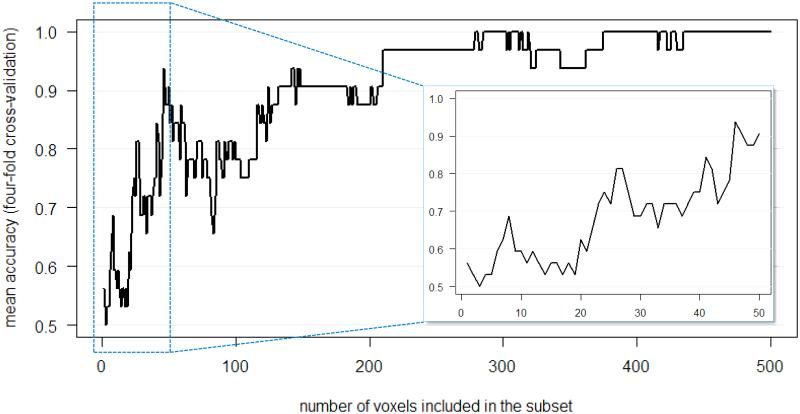Figure 4.
Example of discontinuous information detection by a linear SVM, showing that accuracy increases from chance as the number of voxels increases; complete version is Supplemental Example 1. The simulated dataset has 500 voxels, all equally informative (constant bias), two classes, and four runs, with accuracies averaged over four leave-one-run-out cross-validation folds. Additional voxels are added to each successive subset, such that the two-voxel subset has voxels #1 and #2, the three-voxel subset has voxels #1, #2, and #3, etc. The inset shows the result of adding the first fifty voxels in greater detail. As the inset shows, at less than 20 voxels the SVM tends to suggest an absence of significant information (~50% classification accuracy); however, as the subsets increase past 20 voxels the classification accuracy rapidly increases in a discontinuous manner.

